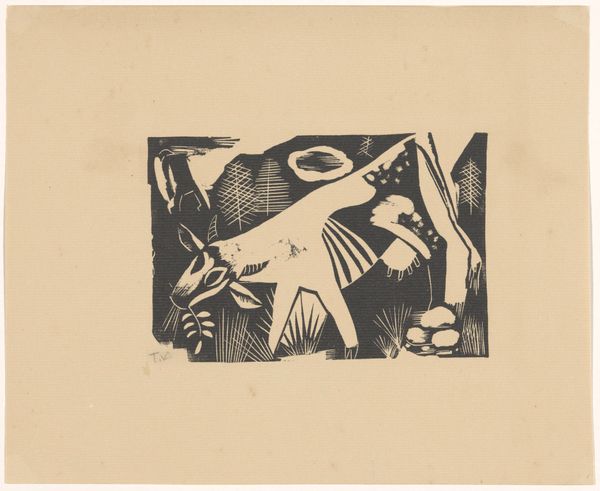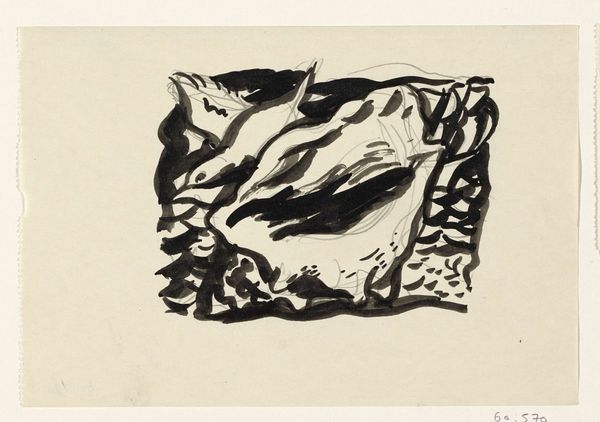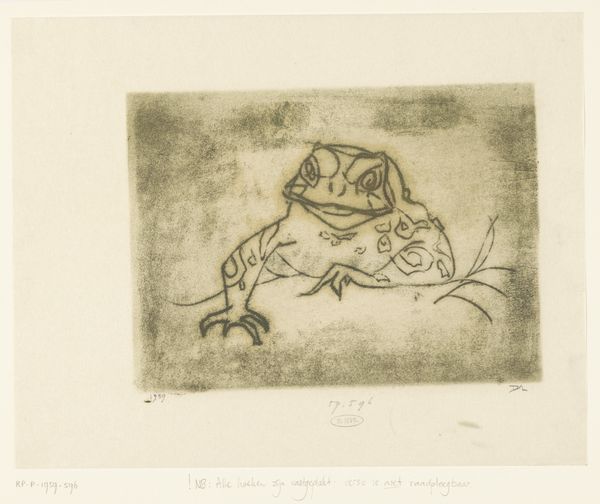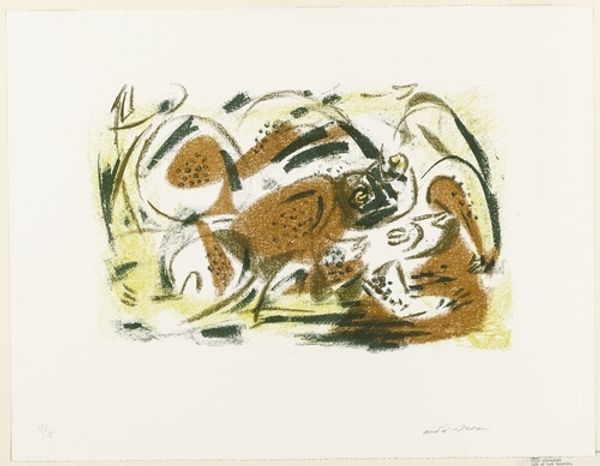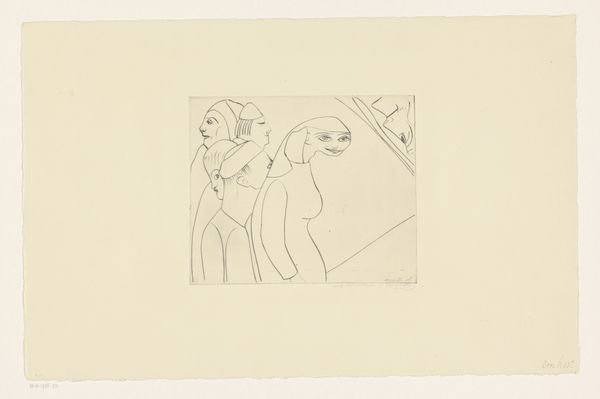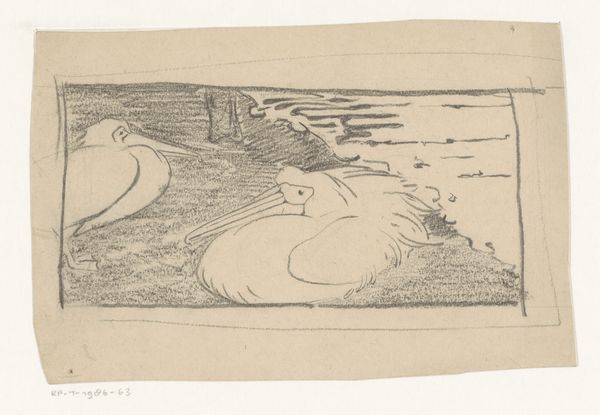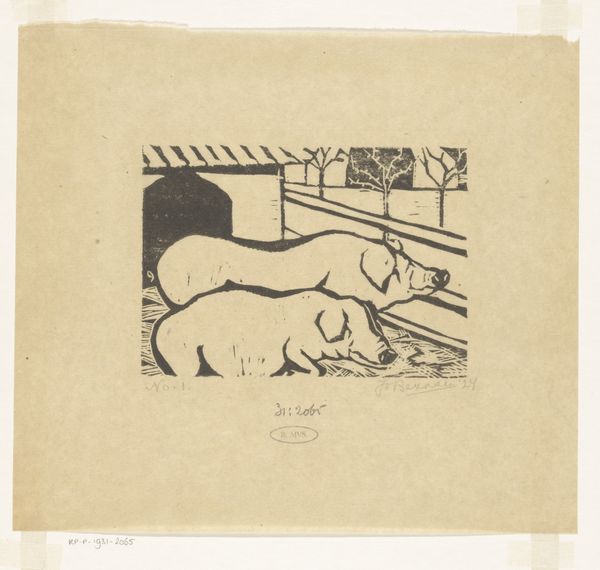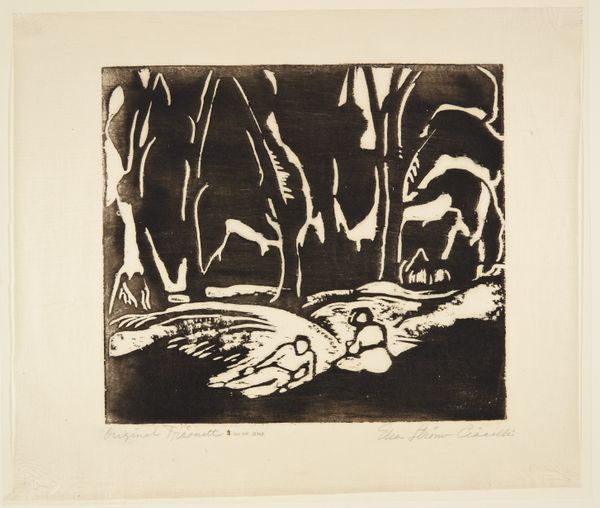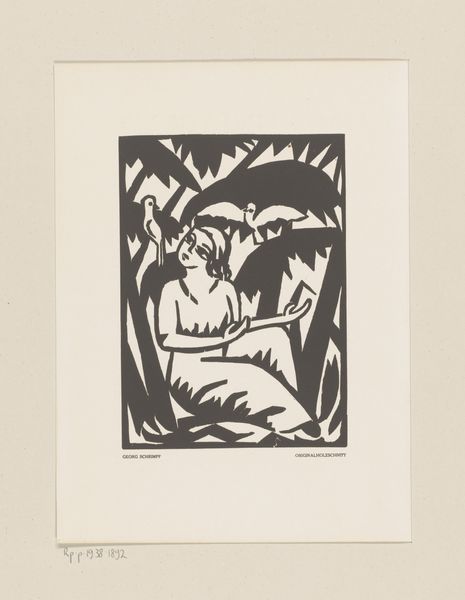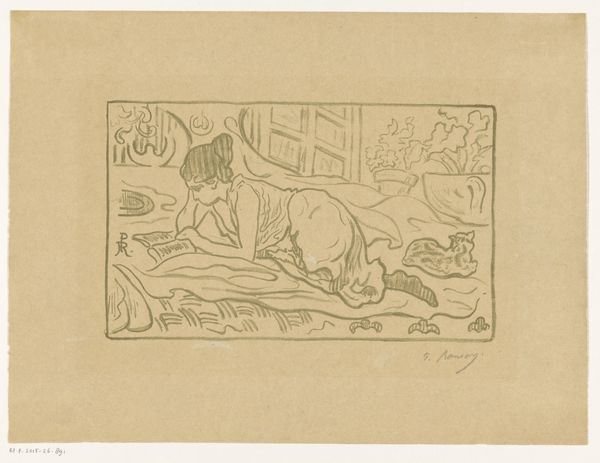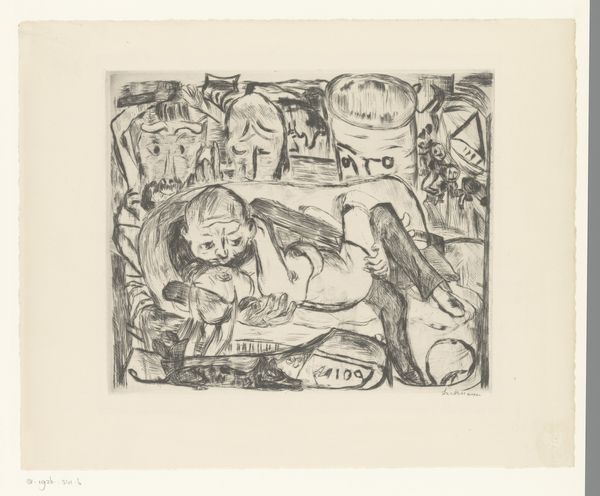
print, woodcut
#
blue ink drawing
#
animal
# print
#
landscape
#
figuration
#
woodcut
Dimensions: height 99 mm, width 140 mm, height 188 mm, width 274 mm
Copyright: Rijks Museum: Open Domain
Editor: This is "Konijnen," or "Rabbits," a 1924 woodcut print by Jo Bezaan, here at the Rijksmuseum. I’m struck by its starkness; the contrast between light and shadow feels so bold. How would you interpret this piece? Curator: Well, looking at it purely from a formal perspective, the piece excels in its masterful use of negative space. Notice how the artist uses the absence of ink to define the forms of the rabbits and create depth. The varying textures, achieved through different woodcut techniques, create a visual hierarchy. Editor: So you’re focusing on how the woodcut itself, the medium, dictates the meaning? Curator: Precisely. The medium isn't merely a tool but an active participant in conveying meaning. The texture of the wood grain, for example, adds a certain rawness to the pastoral scene. How do you feel about the composition? The grouping of rabbits, for example, it seems almost sculptural. Editor: That’s interesting. They are arranged to nearly form a pyramidal structure, but in a very natural way. It makes me think less about narrative and more about visual arrangement, as you said. Curator: Yes, and it's the inherent qualities of the artwork: composition, texture, the balance of light and shadow that make it intriguing, without relying on contextual references. I wonder if the restricted palette also plays a role, simplifying the shapes into geometric forms that amplify a unique perception. What are your final thoughts? Editor: I now appreciate how the medium, with its limitations, became an active element in shaping this compelling image. Thank you for pointing that out. Curator: Likewise, a productive visual and structural examination, underscoring the potency within what initially seemed simplistic.
Comments
No comments
Be the first to comment and join the conversation on the ultimate creative platform.
